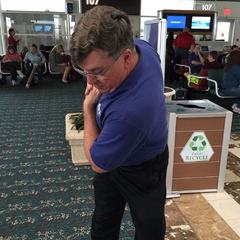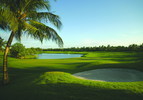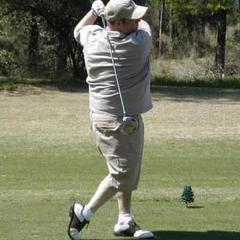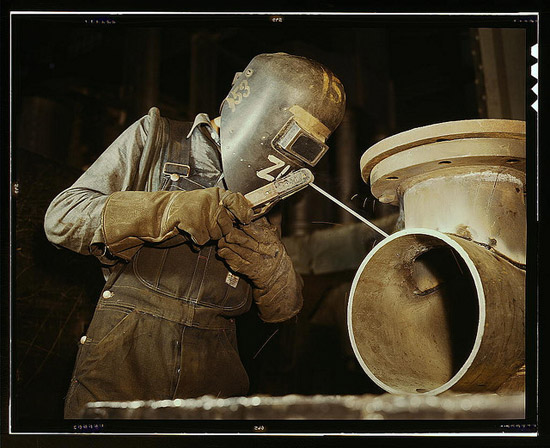-
Posts
7,725 -
Joined
-
Last visited
-
Days Won
7
WUTiger last won the day on June 26 2017
WUTiger had the most liked content!
About WUTiger

- Birthday 11/02/1950
Personal Information
-
Member Title
Fine-tuning the draw
-
Your Location
St. Louis area
Your Golf Game
- Index: 21.4
- Plays: Righty
Recent Profile Visitors
WUTiger's Achievements
-
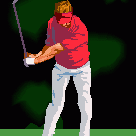
New Irons & Bag Setup Questions
WUTiger replied to dragonsm's topic in Clubs, Grips, Shafts, Fitting
You're mixing up a lot of things, with performance outcomes hard to predict. A couple of things: Your TA irons (in stiff) likely have the TA Tour step shafts, weight about 120 grams. Your new BBTs likely have the RCH 651 graphite (65 grams). So, you will get more clubhead speed from the BBTs in graphite, and better energy transfer from modern graphite vs. pre-2000 steel. As far as actual distance? We don't have good way to compare the clubhead design of the two iron models, which will also influence launch and distance. Only way to tell for sure is do a side-by-side test of the two iron models. --------------------------- Fairway woods: dump the 3W (most players can't hit it off deck), and keep the 5W for short term. You may find a 4H will work best in slot; it will fly longer than a 4i, and stretch out well to the 5W distance. Get a FW and a hybrid you can hit, and in future seasons you can fine tune the distance gap. For short term, learn how to hit those BBTs. (Possible long term mixes for bridge clubs: 4W + 7w + 4H / or / 4W + 3H + 4H) -

Need Advice on Completing My Bag
WUTiger replied to collegefbfan's topic in Clubs, Grips, Shafts, Fitting
Grab a used 5W that you can hit - try it out in shop to make sure it will work for you. Then... The 5W will give you some distance, and can get you out of rough. Versatile club. -
Part of slow play is a matter of perception. In the senior group I once played with, certain players would ping me for slow play. Snide comments about me wasting time marking my ball, or following proper procedure if I had a ball in a hazard. "Just drop a ball and hit it," one grouch said. But odd occurrence followed when I had my first round in local Amateur circuit. After I missed shots, two differnent players from the foursome took me aside and told me to take my time in my set-up. They said I was rushing my shots. Solution: I quit playing in the home-course Senior group. Too much cutting corners on rules which could have gotten me a DQ in Amateur circuit play.
-
Circa 2008 I was playing Ping Eye 2 clone irons (probably SGI in 6-category MPF system). Irons were shafted with Dynalite S300 shafts, higher launch cousin of traditional DG S300. One season, I started having trouble with inconsistent iron distances. I went through fittings, and tried out these UGI models: Ping G10, and Callaway Big Berthas. These are UGI models with high-launch shafts. Problem: Short irons and wedges all ballooned. {UGI head + high launch shaft} = too much help on launch. I also tried out the Callaway X20 (SGI) and X20 Tour (GI) models. The base X20 had 106-gram Uniflex shaft (mid-launch), some 14 grams lighter than the clone set Dynalite S300s. Played the X20 model for two seasons, then upgraded to X20 Tours. For the X20 Tours, I got more GIRs - as long as I was practicing and playing regularly. The base X20 irons got me close to green but I had more distance dispersion than with the X20 Tours. Fastforward to 2018. I switch over to Tour Edge CB Pro Tungsten irons - hollow heads rated as GI. Shafts: KBS Tour 90. Good irons, but... the short irons and wedges were flying proportionally shorter than the 4i-6i. Solution: I put lead tape on shaft below the grips to ensure I got a full drop on the down swing. Research on wedges and short irons suggests that for 8i and above, the launch help/hybrid head has diminishing returns. The high loft angle gets the ball up plenty well on shots with fairly decent contact. Check out the Edison wedge site for details. And, to resolve three seasons of hit and miss, I got fitted and now play Mav MAX irons (see sig line) w/graphite shafts. On the line between GI and SGI (Hot List categories) - certainly not hybrid iron heads. OK, level with us, @Fontyyy... Are you trying to convince us or yourself?
-

Driver, Fairway, and Hybrids — Need to Match?
WUTiger replied to ChiTown's topic in Clubs, Grips, Shafts, Fitting
I had my first true driver fitting in 2008. What I noticed: Launch numbers aside, some models just set up to my eye better than others. If driver looked good, often fairway woods looked good too. Since that time, all my drivers and fairways have been either Callaway or Tour Edge. The two brands just fit my eye, and I can get them zeroed in quickly (if I have the right shaft in them). Hybrids are different. Some are designed basically as SGI clubs, and have quite a bit of offset. These I tend to pull or hook. Others, more square facd along the pro line, are easier to hit straight. Hybrids in play have been Adams, Cobra FlyZ and Callaway BB Osize (see 4H below). For three seasons I played the FlyZ 3H and 4H. This pair gave me a consistent slight fade out of a square stance - good for going other way. Current Callaway 4H has lighter shaft and missed left on occasion: So, I put some lead tape in the toe section of the sole, and this slowed down face closure and straightened things out. -
My home course and several of our neighbors have been overhauling bunkers the last couple of years. Overhaul involves a combination of rebuild and removal. With this has come a reconsideration of the type of sand used. Most of the courses now have medium-heavy to heavy sand in the bunkers. As a result, I switched from a Callaway wide-flange to moderate S-flange sand wedge. The thinner sole slices through the heavy sand better than the wide flange. Our head pro said he had ditched the wider flange for the same reason. Also, be sure to open up the clubface before you grip the club. This will allow the clubface to slide through the sand without digging in too much (a problem with heavier sand).
-

When do You Update Your Driver/Woods?
WUTiger replied to ChiTown's topic in Clubs, Grips, Shafts, Fitting
When to update? When I'm struggling with a driver or fairways, and a lesson or tune-up fitting can't straighten out the problem. Much of changes on long clubs have to do with father time: I'm losing clubhead speed and feel I'm fighting the shaft. Drivers mostly have been related to getting lighter shafts. Fairway woods have been mixed. A couple of times I was too ambitious and tried to play a pro/tour/LST type head. I can handle such a head in a driver if shaft is light enough. But, I need a more user-friendly head in my fairways. -
Given the wide amount of individual differences among golfers, answer is no. In recent years, putting instructors have harnessed research on influence of dominant eye in golf performance, especially putting. Tests on eye dominance related to putting stroke suggest that (assuming right-handed golfer)... Left-eye dominant golfers tend to do better with straight back, straight through (SBST) stroke Right-eye dominant golfers tend to do better with an arc stroke In terms of hardware, SBST golfers often do better with face-balanced putters. Arc golfers, however, tend to do better with varying amounts of toe hang, which meshes with their arc stroke. A full putter fitting is a good way to check which stroke type, and putter type, work best for a given golfer. Note: The dominant eye link is from 2021. The putting stroke link, however, is from 2012; refinements might have emerged in past decade.
-

Does Anyone Swing an 11 Wood?
WUTiger replied to highhandicap's topic in Clubs, Grips, Shafts, Fitting
Back in the previous century, I caddied for a guy who had a Ginty 11-wood. Ginty was a boutique company that made trouble clubs well before Adams Tight Lies and modern hybrids emerged. He used it to chop the ball out of rough - several times a round. Also for medium shots from fairway. And, he used it with a quarter swing for uphill pitch-and-run shots. He got good at it... probably hit it 20 times a round. -
Maltby/GolfWorks has basically three parts to its operation. First, it serves as a wholesaler and retailer of standard golf components such as shafts, grips and golf shop assembly hardware and related materials. They handle wholesaling for True Temper, Mitsubishi, KGB and most major shaft makers, as well as some Maltby in-house shaft designs. (Note: They do not handle proprietary shaft models custom made for a specific OEM club model - no Callaway-only or TaylorMade-only shafts). Second, it produces component heads for all categories of golf clubs. They do all their head design in-house. You can got direct-to-customer to them and have them build the clubs for you, or you can get the components and do it yourself. Related to head design is testing of OEM irons and shafts to get the Maltby Playability Factor ratings. In our area, if you want a reshaft, smaller golf shop will often have you order the shafts and grips from GolfWorks and bring them to the shop once they arrive. Third, it has basic through advanced training on club and shaft fitting, assembly and repair. Along with brand specialty schools offered by OEM such as Callaway and TaylorMade, the GolfWorks Academy is a major source of professional training in this area. I attended the basic three-day fitting, assembly and repair course in 2012. Half the class were OJT industry pros, the other half (including me) were golf hobbyists who wanted to learn more about working on clubs. As far as Maltby-component clubs, they are durable and can undercut the major club manufacturers by 25-50% on cost. Only drawback: resale or trade-in value is not very high, outside the Maltby users community. -------------------------------- History note: Golf Galaxy bought the Maltby/GolfWorks operation in 2006, and Dick's Sporting Goods bought the Galaxy operation in 2007. Original owner and designer Ralph Maltby is largely retired.
-

USGA Handicaps Once Limited to Private Clubs?
WUTiger replied to bkuehn1952's topic in Rules of Golf
For loads of historic details, check out the Pope of Slope website, shown above. Website is run by Dean Knuth, onetime head of the USGA Handicap Department. And, back in the previous century... Circa 1968, the club pro where I caddied told us loopers to use the over-par average of best 5 of our last 10 scores. Uniformity in handicapping basically lagged the development of course rating systems. Oversimplifying the Pope website accounts, ratings systems started in the early 1900s, but varied from club to club and later from region to region. I have some vintage scorecards of country clubs and public courses, some dating back more than 60 years. A 1950 scorecard from the original Bellerive Country Club (it moved to West St. Louis Co. a decade later) had no course ratings listed. A 1975ish scorecard from the new Bellerive did list course ratings for different tees. California in 1978 was in transition: Pebble Beach had course ratings for all four tee boxes, but these were in round numbers: 75, 72, and 70. Torrey Pines - North and South courses - both had course ratings with decimal points, i.e., 68.9. For run of the mill public courses, ratings were often omitted until 1980s. Ruth Park Golf Club (St. Louis) had no ratings listed on its scorecards until about 10 years ago. I have Ruth Park cards from four different decades. In present day, a few nine-hole layouts still lack ratings/slope on scorecards. As a caddie, and well up into the 1980s, private clubs or public courses with formal league systems had players turn in their scorecards for club-level audit, and these equity-adjusted scores were entered into HDCP system. Then one day, players started entering their own equity-adjusted scores under the honor system. Can't really remember when the change-over took place. -

Second Set of Clubs for Vacation Property
WUTiger replied to treebound's topic in Clubs, Grips, Shafts, Fitting
The basis of my backup bag is TaylorMade SLDR irons, which TST kindly selected me to test out in 2014. The emergent bag is all TM, including the bag itself. Irons are 4i-AW, plus a TP SW and LW. Add in a Burner SuperFast driver | an RBG Stage.2 3HL | 3H and 4H Burner Rescues (2007). Finally, a TPA.VIII putter from 1985, the year TM bought the TPA company. Yes, in a tournament I would need to leave out one club. I have played all the clubs for at least a few rounds, just not all at once. Bag mainly gets used by visitors who come to town traveling light, and need clubs so we can go out and play. Whatever seems to work, I guess. In my case, I've gone to graphite shafts in my MAX irons and MD wedges, so the steel shafts might be a big hard to handle. In your case, consider an all star bag of clubs that have worked in past. Probably plug in those G20 irons. A round with former clubs can have a nostalgic glow to it. -

What Is the Deal With Courses Going Cart Only?
WUTiger replied to Quack's topic in Golf Courses and Architecture
Not just pace of play, but location monitoring. GPS trackers help courses enforce "no go" areas on the fairway and rough. If a cart goes into the rough, or into a soggy area, the cart shuts down. Then, you have to back up slowly to the safe area before the cart will function normally. It's the hassle of "car path only" without clearly being able to see where the path is. Another factor involves the sprawling residential golf clubs which mushroomed in the 1990s. Developers envisioned taking them as private equity ventures once the membership filled up. To appeal to golf families, as many home lots as possible were sited to provide fairway frontage in either front or back yard. Thus, these courses had clusters of holes interspersed with stretches of suburbia. But, too many competing developments emerged for the market to handle, and to stay afloat, developers had to chase the $45 a round public golfers to play their spread out tracks. If No. 3 green is a quarter-mile from No. 4 tee, you need to have people ride carts to keep traffic moving. My wife and I tried to walk such a courses a decade ago, and we always got overrun from behind by cart-mobile cavalry. -
Here is a scorecard from classic Glen Echo CC here in St. Louis. I have played it several time in local amateur circuit. Lots of interesting and challenging holes. Scorecard had uncluttered front cover, with striking green background. In lower left hand corner is image of silver medal for the winner of the first every Olympic golf tournament held in 1904. Back left panel text gives quick homage to architects Jim and Robert Foulis, whose family was responsible for designing dozens of course in the Midwest. Back left also shows layout of the course - front 9 on outer loop and back 9 on inner loop. Inner leaf contains the scorecard with the yardage lines color-coded to match the tee boxes. Plenty of room to write down scores, without clutter of excess directives. And, it graciously places a separate Ladies Hcp line at bottom. In nod to classic courses, it has the name of each hole - Lilac Way through Sweet Home - lightly printed in its scorecard column. Overall I give it 8.5 out of 10: distinctive and interesting - but not cluttered.
-
During the persimmon era I played a 3W + 4W... many amateurs did, except for those single 'cappers who, a la Jack Nicklaus, sported a 1 iron in the bag, and a 3W only. In 1994, I entered the new era of metal wood w/graphite shaft for long clubs. At the time, the dominant metal wood standard was 3W + 5W. The 5W had a bit more loft than a 4W, and better covered the 3W to 3i gap, as many golfers - and manufacturers - dropped the 2i. For one thing, it allowed room for a LW in the bag (pre GW era). From 1994 to 2010 I was happy with different iterations of 3W + 5W for the most part. Then, one day I realized I just couldn't launch a 3W very well any more. So in 2011, I switched to TM RBZ 3HL + 5HL, the fairways of too light a shaft. (In other kingdoms, they were called 4W + 7W). Next season I switched to a Tour Edge 4W + 7W, and have played them since (except for a couple of model changes). If you can hit a 3W, a 5W is often a good choice: 3W + 5W gapping works well in many cases. As for hybrids vs. fairways, part of the story is preference. And, it's a question of yardage match-up. Depending on model mix, the 3H and 5W may duplicate distance. In my case, the 3H and 7W often seems to duplicate distance. Among Ping players, single fairway metal players often take the 17.5* 5W, and down-loft it to 16.5* for more of a 4W. And, the down-loft opens the face slightly. This is similar to what oth did with the 5HL...


